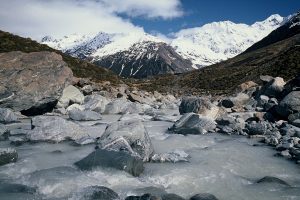The Forgotten Forests of Northland
In Northland, many great native forests and their wildlife are collapsing. When the sun goes down, thousands of possums relentlessly consume the forest canopy, slowly killing ancient forest giants like tōtara, pūriri, pōhutukawa and northern rātā. Rats come out to consume our native birds, insects and lizards. Dean Baigent-Mercer takes us on a tour of Northland’s forgotten forests and shows us first hand the challenges of predator control.
Poo!
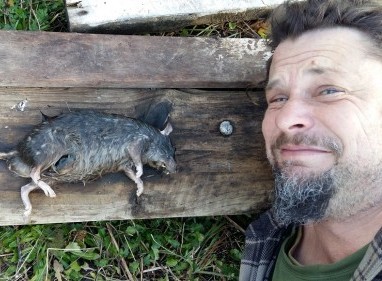
Dean shows off how big some of the rats he’s killing are.
The things you have to do to get the message about predator control through… My mate Brad was egging me on, yelling “get closer, no, closer! People won’t be able to see…” as he waved his camera around with an evil laugh. The stench was stomach turning. But we just wanted everyone to see how big some of the rats we were killing are. There are bigger ones of course.
The thing with rats – and you’ll know this if you’ve ever had one living in your walls or ceiling – they are very very busy at night. You bang the wall and yell “SHUT UP!” and they do for a short while… but then they’re off again, scuttling about in their nasty ratty way.
Now, imagine you’re a miromiro, a little native tomtit, and one of these big rats comes along your branch to your nest. It’s not only that rats eat seeds, bugs, eggs, and chicks in native bush but their sheer powers of harassment can wear a little bird (or big human) out. And then they’re in for the kill!
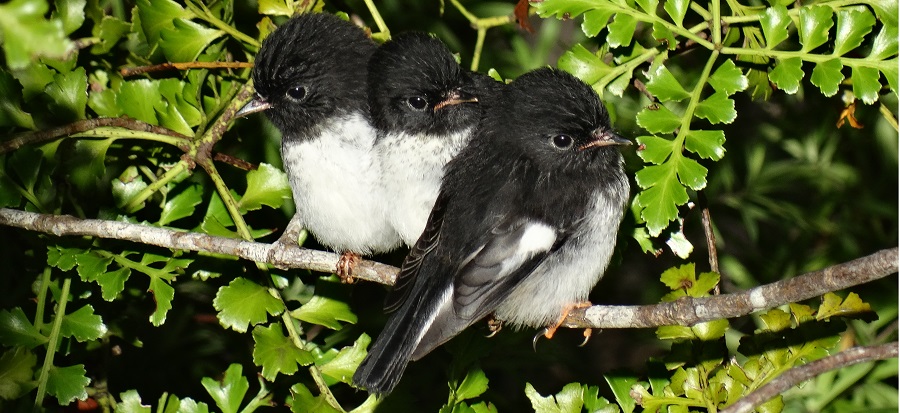
A huddle of miromiro (tomtit).
Hole
I found this and another freshly excavated rat hole while planting mānuka the other day. Shudder! Not good on the edge of any wetland. Rodents love to move into our homes for warmth, dry, food as the seasons slide into autumn and winter. Even as I type this, I caught the blur of a new mouse moving into my house (bugger!).

L-R: A freshly dug rodent hole on the edge of the wetland, a rat predates on an egg (Photo by Nga Manu Images)
Yes, this happens every year, but in Northland this time it’s different. The very late summer has just abrasively snapped into autumn after the wettest summer in more years than many people alive can remember, thanks to El Nino.
Lush
Across Northland, collapsing forests drank deeply. Native forests that have multi-species pest control going on recovered, even flourished. Some rewarewa were tall, dying sticks a few years ago. Possums had ravaged them. But this year, they sprouted an enthusiastic mop of green at the top.
In these safe places it has been a bumper year for the miromiro/tomtits too. And BOOM! All at once many native trees masted (that means crazy amounts of flowering and fruiting) over months and months.
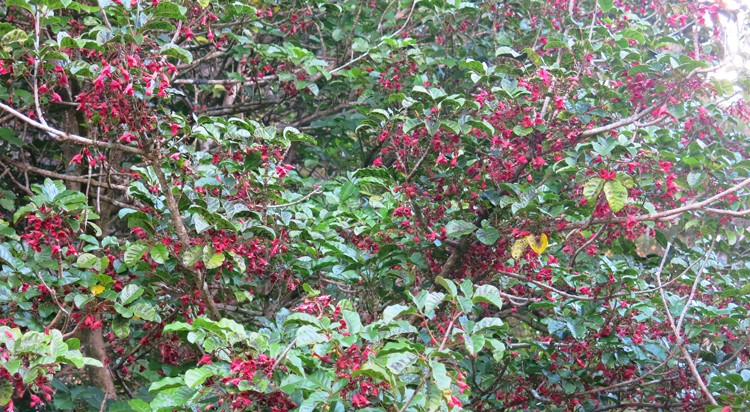
Trees are bursting with fruit after a mast.
In spring, cream bell flowers smother the crowns of hinau trees. Male kahikatea trees looked rusty as thousands of tiny male cones on a single tree released plumes of yellow pollen like smoke on a breezy day.
Despite this beautiful sight, my eyes reacted badly. They were red and irritated for two days.
Spears of flax flower stems pushed up between the leaves and split to become tall flower heads full of nectar. The density of flowering was astounding and so were the aerial battles of tūī fighting off other birds who wanted the nectar too.
It was a big spring for ti kouka, cabbage trees, with massive bunches of flowers that bees were all over and rewarewa trees were so full of flower in spring the trees seemed to change colour.
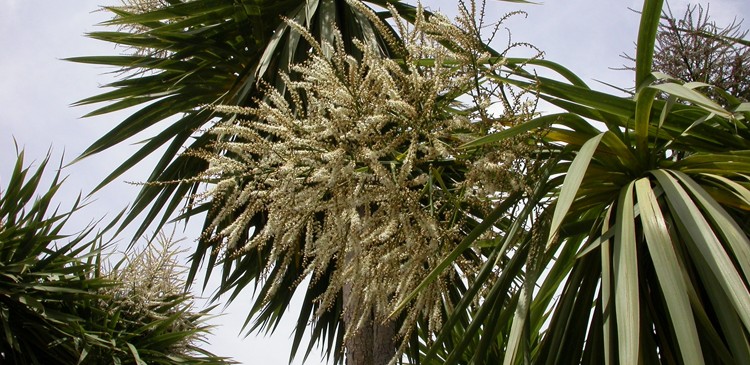
Ti kouka (cabbage tree) in full flower.
And now, come autumn, vast amounts of shiny flax seed have been thrown like black confetti from their pods. In the past, the flax pods would be prised open by kakariki in huge flocks, feasting on seed. But possums pushed the kakariki to extinction on Northland’s mainland in the 1980s. The rewarewa seed pods are now being ripped apart by rats. Possums and rats have been scoffing down kahikatea and the purple berries of mahoe.
Don’t forget these forests!
These forests are in trouble, but where there is multi-species pest control they are bouncing back.
And yet, the Minister of Conservation recently shrugged off the crisis in Parliament. She claimed only beech trees (mainly in the South Island) have intensively masted and fed introduced predators that cause life in our native forests to collapse.
Going back to the hole… We are in one! A great big one. We need monitoring and the resources to respond to masting events that fuel collapsing native forests in Northland and elsewhere. We need funding for multi-species pest control that targets possums, rats, stoats, ferrets, weasels and feral cats for 20 years.
We’re hoping the Minister of Conservation remembers this for the coming year’s budget.

